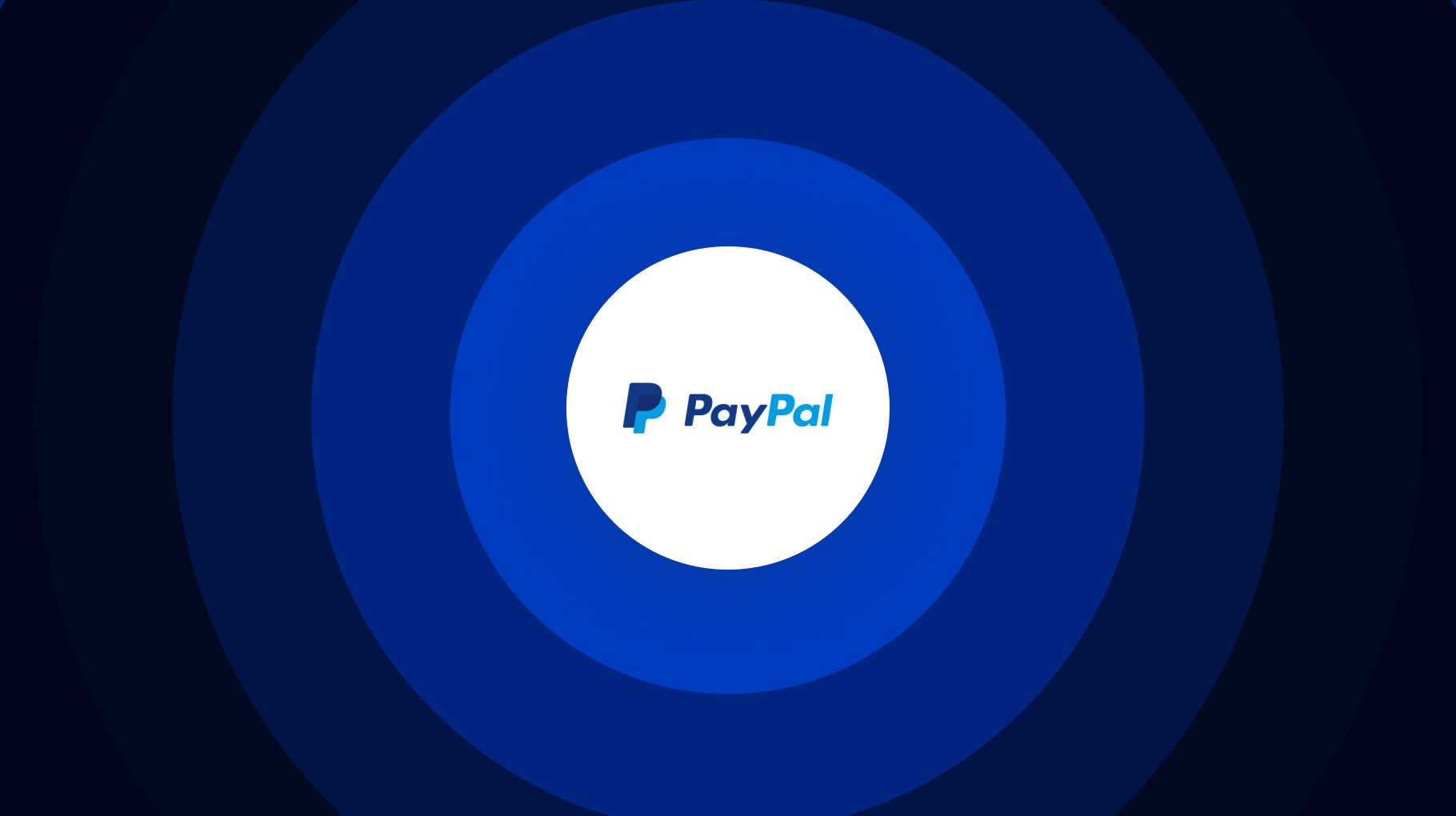PayPal Revenue and Growth Statistics (2024)

PayPal Interesting Key Facts
- PayPal was first established as Confinity in 1998 by Max Levchin, Peter Thiel, and Luke Nosek. It was a company that developed security software for hand held devices. Failing with that venture, the founders decided to switched into digital wallet.
- Confinity converged with X.com, an online financial services company wherein Elon Musk was a cofounder of. Thus, PayPal was born.
- Elon Musk was optimistic about Confinity’s potential to be a successful electronic payment system. He then proceeded to terminate all of X.com’s internet banking operations and focus on PayPal.
- In 2002, PayPal was acquired by eBay for $1.5 billion in stock of which Elon Musk was the largest shareholder with 11.72% of shares and received $175.8 million.
- Elon Musk used the PayPal money to build SpaceX.
- After eBay bought PayPal. A group was formed by former PayPal employees and founders – The PayPal Mafia.
- Members of this group would then create and develop other technologies and companies such as Tesla Inc, Linkedin, Affirm, Palantil Technologies, YouTube, Kiva, Slide, SpaceX, Square, Yammer and Yelp.
- The members of the PayPal Mafia are considered by many as the main people who put Silicon Valley in the map to be one of the greatest technology hubs in the world.
- PayPal was ranked 8th as America’s best employers in 2021.
- PayPal is the most popular online payment system used in the United States.
Sources: Forbes, Tech Republic, eCommerceDB, WSJ, The Founders: The Story of Paypal and the Entrepreneurs Who Shaped Silicon Valley
PayPal: Company Overview (About)
PayPal, the first name that comes in mind when talking about payment processors! Also an amazing company at whose stats we’re going to check out now.
Snatch look:
We guarantee that you’ll learn lots of new stuff about PayPal in this post.
How much of this did you already know about PayPal?
Sources: SEC, PayPal, Google Finance
What is Paypal’s revenue?
Paypal has a revenue of $27.52 billion in 2022. The table shows us a more detailed look.

Source: Google Finance, Statista, Electronic Payment, News Wire
PayPal Operating Expenses
PayPal had operating expenses of $5.73 billion in 2022.
Source: Google Finance, Paypal
PayPal Profit
Paypal earned a profit of $2.42 billion in 2022, a decrease of around 41.97% in year-over-year growth. The table shows us a more detailed look.

Source: Paypal
What is PayPal’s market cap?
Paypal has a market capitalization of $92.11 billion in 2023, an increase of 13.45% compared to $81.19 billion in 2022.

Source: Companies Market Cap
PayPal Acquisitions
PayPal has 26 acquisitions throughout the years from 2008 until their latest acquisition last September 2021.
PayPal is one huge company, so it’s pretty expectable for it to have acquired lots of companies. As you can see, 26 acquired companies can make a long list.
But as payment processing is a large domain, and since PayPal was started in 1999, you would expect a lot of acquisitions from a company at PayPal’s level.
Sources: Reuters 1, Reuters 2, Finovative, WSJ, The Verge, Forbes 1, Forbes 2, Techcrunch 1, Techcrunch 2, Techcrunch 3, Techcrunch 4, Techcrunch 5, Techcrunch 6, Techcrunch 7, Techcrunch 8, NewsCenter, Yahoo Finance, BBC, Market Watch, Paypal 1, Paypal 2, Paypal 3, Venture Beat, Chargehound
PayPal Investments
PayPal had made 29 investments so far. Out of those 29, they are the lead investors of 9 investments.
Below are the latest investments that Paypal has made over the years.
The table above shows which organization is a lead investor, as well as those who are not.
Have a look at that interesting Meta investment in 2022, with $10 billion being raised at PayPal. It’s also quite recent!
Source: Crunchbase
PayPal Funding History
PayPal has 5 funding rounds throughout the years. The total funding amount was $216 million with the last funding happened in 2001.
The table above shows you the necessary information to be known about PayPal’s five fundings.
As PayPal became so successful, you can observe how the last funding took place in 2001. Definitely a long time ago.
Source: Crunchbase
How many people work at PayPalPaypal has 29,900 employees across 27 countries around the world.
Also, PayPal announced that they were going to lay off 2,000 employees so we would be expecting this number to drop down this year.

Sources: Statista, Linkedin, Forbes 1, Forbes 2, Reuters, CNBC
How Many Active Users Does PayPal Have?
There are 430 million people actively using PayPal in 2022.

Source: GlobalData, eBay, Paypal, Reuters
PayPal active users gender distribution
In 2023, it’s estimated that 61.9% of PayPal’s users are males, and 38.1% of the users to be females.

Note: These numbers are estimation from Similarweb and unofficial.
Source: Similarweb
PayPal active users age distribution
PayPal’s most popular user age group is the 25-34 group, with almost 28% of the total users. Then, there’s the 18-24 age group, covering 21.09% of the total users.

Note: These numbers are estimation from Similarweb and unofficial.
The 35-44 age group is not that far away from the second most popular one, as it covers 19.56% of PayPal’s users.
For a better view and understanding, this table shows you the precise numbers for each age bracket of people that are on PayPal.
Source: Similarweb
What is the Total Payment Volume of PayPal?
PayPal processed a total payment volume of $1.36 trillion in 2022, a growth of 8.80% year-over-year compared to the processed total payment volume of $1.25 trillion in 2021.

Source: GlobalData, Paypal 1, Paypal 2, Paypal 3, Paypal 4, Paypal 5, Paypal 6, Paypal 7, Paypal 8, CTV News, Businesswire
Which industries are using PayPal Enterprise the most?
PayPal Enterprise is a function wherein the company helps businesses find active buyers, increase conversion across channels, and scale into new markets. Payments are discussed through PayPal sales team.
The table below shows us which industries are using PayPal Enterprise the most.

Thee Retail industry covers 24.80% of PayPal’s usage. Then, there are the Professional Services, with 15.50%.
Looking at the table above and seeing all these different industries, you can see how there are really no boundaries for PayPal.
There’s money to be made in both Retail, Media, and even Non Profit, so be assured that PayPal is always there as a payment processor.
Sources: AppsRunTheWorld, Paypal
PayPal Enterprise customers by country
Paypal Enterprise’s most customers are from the United States, with 84.90% of the total users.
Next after the big player, there’s the United Kingdom, with (only) 6.40% of the pie.

Followed by which, there are Canada, France, and Australia on the list. They cover from 1 to 3% of the users.
Sources: AppsRunTheWorld, Paypal
PayPal’s Market Share (Online Payment Industry)?
As of 2022, PayPal has a market share of 52.45% in the online payment industry.
.jpg)
This really means that PayPal is pretty much over 50% of the online payment industry. As we’ve previously seen from PayPal’s revenue and profits, this is a very large industry.
Therefore, seeing how PayPal is literally over half of the industry, we can try only and understand how big PayPal really is when it comes down to ePayments.
Source: enlyft
How does PayPal make money?
PayPal has a three-phase business model.
In phase 1, payment volumes are largely coming from eBay. Individuals and businesses without credit cards were very attracted to the system as they can have transactions in eBay without relying on credit cards.
In Phase 2, PayPal planned to earn interest through funds on papal accounts. However, most of the PayPal users would immediately withdrew their money.
To solve this problem, PayPal catered more to business accounts. PayPal started relying on earnings from its service charges rather on the interests from deposited funds.
In Phase 3, after increasing its domestic and international penetration on eBay, PayPal started their off-eBay strategy by adding users across multiple platforms, meaning they will expand more on different platforms other than eBay.
In 2003, Merchant Services was created within PayPal. This provided payment solutions to small and large e-commerce businesses outside eBay.
To sum it up, PayPal earns from its transaction fees, subscription fees for its premium features mainly offered to businesses, sales of card readers, referral fees on cashback rewards, interest on cash advance, business loans, interchange fees, and more.
Sources: Linkedin, Wall Street Folly
How much time do people spend on PayPal?
As of November 2022, the average time spent using PayPal is 00:04:06.

How much time do you spend using PayPal?
Source: Similarweb
Where is PayPal available (countries)?
PayPal is available in 200 countries/regions, which makes it available worldwide.
Source: PayPal
How many currencies does PayPal support?
As of November 2022, PayPal supports 25 currencies. Below is a list of them:
Source: PayPal
Which countries visit PayPal the most?
The United States is PayPal’s #1 visitor, with 39.41% of the total PayPal users.

After the US, Germany is the most popular country for PayPal, with 15.72% of the total total users. The table below lists the most popular countries:
Source: Similarweb
PayPal Mobile App Statistics: Android vs iOS
These are the key stats and key info on PayPal mobile app on Android as of October 2022:
These are the key stats and key info on PayPal mobile app on iOS as of October 2022:
Source: Google Play, Apple Store
PayPal Financials
The following subsections provides us with a detailed look on PayPal financials through the years. As of 2021, PayPal has a net profit margin of 16.43 with 4.6 earnings per share.
Source: Google Finance
PayPal Net Profit Margin
PayPal hadnet profit margin of 12.85% in 2022.
See how PayPal’s net profit margin is versatile throughout these years. It doesn’t increase by a lot, and yet, it also doesn’t decrease by a lot.
Source: Google Finance, PayPal
PayPal Earnings per Share
PayPal has an earning per share of $3.52.
Source: Google Finance, PayPal
PayPal EBITDA
PayPal has an EBITDA of $4.96 billion in 2022, a slight decrease of 4.80% from prior year.
Source: Google Finance, PayPal
PayPal Effective Tax Rate
Paypal had effective tax rate of 22.40% in 2022.
Source: Google Finance, PayPal
PayPal Cash and Short-Term Investments
PayPal had cash and short-term investments of $10.83 billion in 2022, an increase of 14% compared to $9.50 billion in 2021.
Source: Google Finance, PayPal
PayPal Total Assets
PayPal had total assets of $78.72 billion in 2022.
Source: Google Finance, PayPal
PayPal Total Liabilities
PayPal had total liabilities of $58.44 billion in 2022.
With assets come liabilities as well, and you can’t do much to lower them if you want to increase assets and equity.
Source: Google Finance, PayPal
PayPal Total Equity
PayPal had a total equity of $20.27 billion in 2022.
Source: Google Finance, PayPal
PayPal Shares Outstanding
PayPal had 1.15 billion shares outstanding in 2022.
Source: Google Finance, PayPal
PayPal Price-to-Book
PayPal has a price-to-book ratio of 4.66.
Source: Google Finance, PayPal
PayPal Return on Assets
PayPal had return on assets of 3.01% in 2022.
Source: Google Finance, PayPal
PayPal Return on Capital
PayPal had a return on capital of 12% in 2022.
Source: Google Finance, PayPal
PayPal Cash From Operations
PayPal had cash from operations of $5.8 billion in 2022, a decrease of 8.52% in year-over-year growth compared to $6.34 billion.
Source: Google Finance, PayPal
PayPal Cash From Investing
PayPal had used $3.40 billion in their investments last 2022.
Source: Google Finance, PayPal
PayPal Cash From Financing
PayPal cash from financing of -$155 million.
Source: Google Finance, PayPal
PayPal Net Change in Cash
PayPal has net change in cash of $1.13 billion. A massive increase of net change in cash when compared to the -$11 million in 2021, that’s 1000x more than the current value.
Source: Google Finance, PayPal
PayPal Free Cash Flow
PayPal has a free cash flow of $5.10 billion.
Source: Google Finance, PayPal
PayPal Traffic Summary Overview
Source: HypeStat
PayPal Website Traffic Sources
PayPal’s most traffic sources come from Direct Sources, as well as Referral Sources.

Let’s look at all of them in the table below:
Source: HypeStat
PayPal Traffic Source: Desktop vs Mobile
- 12.67% of the users visit the website through desktop devices
- 87.33% of the users visit the website through mobile devices

Most PayPal users like to browse the app on their phone or table.
In case you’re a PayPal use, ow about you? What’s your favourite way to use PayPal?
Source: HypeStat








